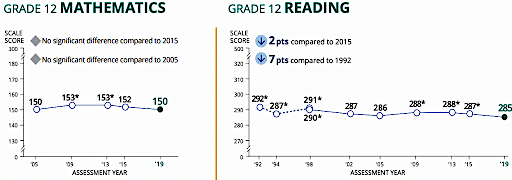By James Stoffer
A recent report from LearnPlatform shows a 40 percent increase in average products accessed by US school districts over the past year; from 1,033 in 2020 to 1,449 in 2021. Clearly, schools are working hard to solve the learning challenges before them.
But sometimes, hard work is only a portion of the solution. All of this technology is getting in the way of student success. What if schools worked equally smarter?
Certainly, part of the massive increase of EdTech is schools grasping at straws to help with digital schooling, not just digital learning, in the midst of a pandemic. EdTech has always held the promise of improved efficiency and effectiveness in all corners of the classroom, the school, and the community at large. But there has never been the push to dramatically accelerate the adoption of it all until the pandemic. Is that a good thing? A GREAT thing? Somewhere in the middle?
EdTech solutions were already siloed, overly fragmented, and extremely messy before the pandemic. Over the past year and a half, it’s just gotten worse. There are now even more silos and fragmentation, with multiple systems collecting data with different UX/UI, and none of them are designed to speak with each other. As a result, the learning community (i.e. all stakeholders there to support student success) is basically closed. Schools should work smarter by opening their learning communities by connecting what matters most.
Here are some questions for you:
Has all this tech adoption worked? The answer is a resounding ‘Not really.’
Data collected on the efficacy of tech (like the NAEP shown here) or most state test scores across the country indicate that all this tech, even before the pandemic, wasn’t moving the needle on academic success to any great degree.

And now, it’s not just academics that schools need to worry about or focus on, but rather the whole child. It’s mental and behavioral health. It’s social-emotional learning and skills. It’s digital citizenship. It’s so much more.
Has all this tech adoption made “schooling” easier at least? Again, the answer is a resounding ‘Not really.’
Staff are overwhelmed. Parents are frustrated. There are too many logins, too many processes, and too many UI/UXs to learn. There’s not enough time for everyone to become experts in how or why to use it all. Most everything is reactive. Very little is proactive or preventative.
A teacher recently commented on Twitter; “Teaching is fun. The 800,000,000 other things we have to do during the teaching day, not so much…”
Another teacher, in response to a tweet about why teachers love having 2000 tabs open in their internet browser, replied; “Oof! Well, I don’t want to forget what I was working on, then that reminds me of something else, which leads me to open two more tabs…and it goes on and on.”
Are schools, at the very least, using the EdTech they’ve purchased? This is simple. ‘Absolutely not.’
If you spend time talking with tech directors or teachers in the trenches, a large portion of the purchased tech is not even being used, or, if it is, not with fidelity. For example, most supplemental ELA/Math solutions are only consistently used by 20-30% of the users schools pay for. Only 40-50% of the functionality in LMSs is actually used (and that’s a stretch). Mass emails and text messages are used to communicate to families despite there being a plethora of personalized communication tools bundled in with the various products being used. Schools are paying for a Cadillac Escalade, but they only really need a Honda Accord.
The point is that schools should start monitoring usage far more closely to ensure they’re only buying products they use, and/or demanding pay-for-consumption models (like Slack and other non-EdTech SaaS).
Finally, does all the data from these systems paint, at the very least, a holistic picture of what’s happening with the student? The answer is ‘Absolutely not.’
Administrators implement data warehouses and dashboards to try to paint a bigger, whole child picture. Yet in reality, less than 5 percent of all the data natively created across the silos actually integrate into a data warehouse or dashboard and the information transmitted is that of a group of students or the district as a whole, not the individual child where the work is actually done. More importantly, most of it is lagging, past data that’s not actionable whatsoever.
There’s simply no place for everyone to go for a “Student 360” to understand what’s happening in real-time with the whole child. From Academics to behavior to health to extracurriculars to aspirations to success plans and so on. How can adults who only spend a sliver of their time with a student understand where they’re thriving (or struggling)? It’s impossible.
Teachers can’t be expected to do it all! They don’t have the time. They have a big caseload. They’re not deeply trained in most non-academic areas critical to the whole child.
Increasingly, community-based partners and organizations are stepping in to help, but they have no access to data on what’s happening in school. Most of the data that community-based organizations collect (e.g. attendance, behavior, growth, services consumed, etc.) never gets communicated back to the stakeholders supporting the student in school.
Why is a real-time “Student 360” important? It takes a village to raise, grow, and set students up for success later in life. Without an easily accessible holistic picture of a student, how can that village actually build a relationship with them?
The student is the customer. So why are schools buying products that, despite the best of intentions, don’t actually help build relationships with students first and foremost? In business, the most important stakeholder is the customer and as a result, everything revolves around it…especially technology and process decisions. That’s not the case in K-12, hence the messy tech stack and the left hand not knowing what the right hand is doing.
Who is stuck managing it all? The technology department. How do they feel? Burnt out. Always playing catch up. Never good enough. As one tech director recently said while chatting with us at a CoSN conference; “We’re saviors brought in to support the ‘latest flavor of the month’.”
This is a call – for the superintendent to put the student in the center of everything they do. From strategy to technology to execution to how they measure success. Ensuring the system they lead knows and loves their customers, the students, is critical to growth.
This is a call – for the rise of the person in charge of technology to have more influence on shaping systemic strategy through technology, not the other way around. Technology just gets piled on if the strategy isn’t a foundational element. In today’s world, technology should be as much of a component of a system’s strategy where it becomes the catalyst to change, effectiveness, and efficiency – not the afterthought.
This is a call – for communities to demand that everyone is connected in real-time to what’s happening with students in real-time. The community should be equipped to pounce on relationship building and proactive strategies with children so they’re set up for success long after they leave K-12.
About the Author
James Stoffer is the Chief Executive Officer at Abre.io where he focuses on leading company growth, operations, and talent strategies. He has spent his entire career in the education industry, most recently at DreamBox Learning, successfully leading sales, customer experience, and business operations. Prior to DreamBox he also held leadership positions at Hobsons and MasteryConnect. His passion is helping scale social impact companies focused on improving the lives and futures of students and educators throughout the world. He has an MBA from Xavier University and BS in Marketing from Clemson University.
- edCircuit – S2E1 — Using Data to Address Digital Equity
- edCircuit – S2E2 — EdTech Data Trends in 2020-21
- EdTech Magazine – Improving Schools Through Data


